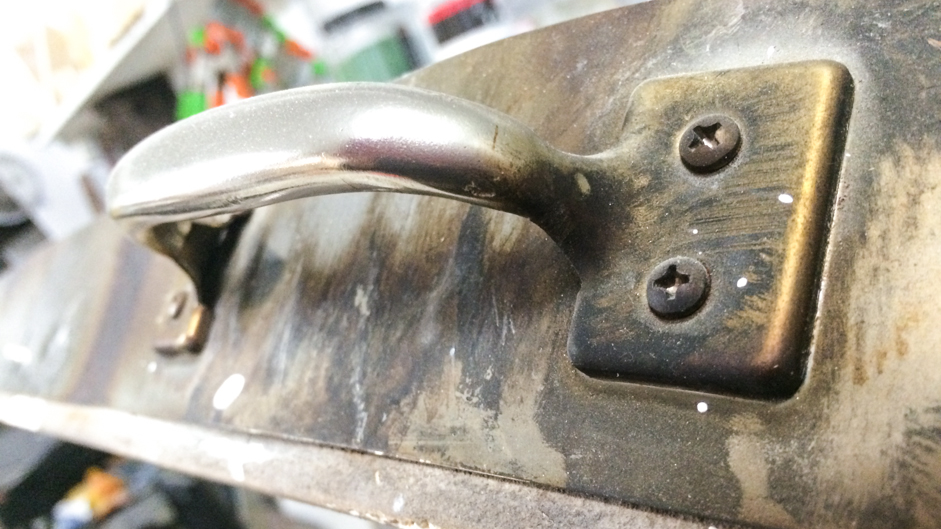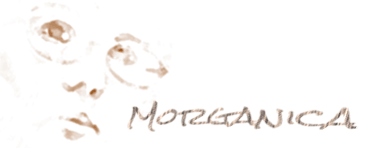
Tonight I’m putting the final load into Skooby, my Skutt GM1414 bathtub kiln, and closing the lid on 14 years of firing adventures.
Wow. Glassists talk glass, tools, studio, classes, techniques, artistic sensibilities, but rarely mention our central, silent, steady partner: The kiln.
Odd, when you consider that we call what we do “kilnforming…”
In all that time I’ve produced thousands of pieces of fused glass, hundreds of pate de verre pendants and plaques, dozens of cast glass sculptures. I’ve made hundreds and hundreds of test samples. That kiln has been on more than it’s been off.
 Yet Skooby’s only had three new controllers, four replacement kilnshelves, and minor touchups with refractory cement…not a heckuva lot considering he’s been firing almost constantly for the last 14 years.
Yet Skooby’s only had three new controllers, four replacement kilnshelves, and minor touchups with refractory cement…not a heckuva lot considering he’s been firing almost constantly for the last 14 years.
I’m getting a new kiln (more about that when s/he arrives). My friend and newbie glassist Carla is adopting Skooby.
There’s a wonderful symmetry there: Her very first plate was fired in Skooby. She’s gathering friends and family here on Sunday for a brief packing-up ceremony to usher Skooby to his new home. We’re all crossing our fingers, because Skooby’s showing his years and I’m not sure how well he’ll take the move.
 Of course, a kiln is really just an overinsulated hotbox. It’s got some heater coils, a lid and a switch…but really…it’s not much more than a (really big) toaster oven.
Of course, a kiln is really just an overinsulated hotbox. It’s got some heater coils, a lid and a switch…but really…it’s not much more than a (really big) toaster oven.
We’ve fancied it up with a computer-controlled switch, maybe a heat-proof window and some vents to let in the cool (or let out the bad).
But really, it’s still a box. There’s not a heckuva lot you can do to hurt a kiln.
Not that I haven’t done my best.
Glass casters are incredibly rough on kilns. Pate de verre artists like me, making small, wet-packed molds dried and fired in the same kiln, are probably the very worst.
All that alkali-laden moisture corrodes the bejasus out of kiln surfaces, and my habit of propping open the Skutt’s heavy winged lid, and banging heavy molds around, takes care of whatever might have survived.
 So Skooby’s top row of firebrick is pitted and worn, like wave-pounded rocks. His lid has gotten floppier, and here and there an element droops below the lid line.
So Skooby’s top row of firebrick is pitted and worn, like wave-pounded rocks. His lid has gotten floppier, and here and there an element droops below the lid line.
There are hairline cracks in cement smoothing over the lid’s firebrick on top, and it’s stained where molds have dripped a little brown wax while drying.
You’re not supposed to set stuff on a closed kiln–schmutz will rain down on whatever’s cooking inside–but when you have such a nice, flat surface in a sea of mess, it’s irresistible, and stuff happens. Carla knows this, and it’s part of why she’s ordering a new lid for Skooby.
She’ll also replace the broken-out groove in the bottom of the kiln, where the element has popped loose. She’ll have things tightened up and replace the curly-Q coil with a new body element. And she’ll scrape the old kilnwash off the floor (I never needed it since I fire on a sandbed), and replace it with fresh.
 That wavy element’s been loose for years. It came in handy for me, since I’d move it around as an auxiliary bottom element for thicker castings. I figured it was much cheaper than installing a REAL bottom element.
That wavy element’s been loose for years. It came in handy for me, since I’d move it around as an auxiliary bottom element for thicker castings. I figured it was much cheaper than installing a REAL bottom element.
I honestly never thought one way or another about how odd it looked until a friend (and famousish glass artist) stopped in for a gander at my studio. He took one look at Skooby and whistled.
“Whoa, that kiln has REALLY been through the wars,” he grinned, pointing at my creative element arrangement. “When were you planning to replace that?”
I blushed and changed the subject. Next day I bought a tub of refractory cement and a box of firebrick, started making repairs…but really, Skooby had become as comfortable as a pair of old shoes and he fired exactly right for the work I did. He might not have been much to look at, but he never let me down.
I wish I could say that my last firing is some great magnum opus, a fabulous new sculpture that summarizes the journey and maybe passes on the torch. In reality, it’s pretty mundane: More tests.
This time, it’s samples of Color Line enamels for the Bullseye beta tests, and some trials with color inlays using the Silhouette Cameo to cut ThinFire and dichro slide. Both will show up in posts later this spring, but it seems odd that Skooby won’t be there at the finish.
He was my first REAL kiln. I’d had smaller, tabletop kilns before Skooby, and I’ve certainly rented/borrowed space in bigger, fancier kilns for my sculptures. But most of my work has been done in Skooby and, frankly, I could probably go on firing with him for another 14 years.
…except that a bathtub kiln has some disadvantages that have started to chafe a bit more than I’d like. That is especially true when my day job and other obligations don’t leave a lot of extra time for working around Skooby-induced limitations.
First, bathtub kilns aren’t terribly efficient; Skooby’s interior is 6.7 cubic feet with a footprint of roughly 25″ x 42.”
 Sounds like a lot, but the truly useful part of the kiln is only about 24″ x 25″ x 13″ in the dead center of the kiln, or about 4.7 cubic feet. The extra 2.7 cubic feet comes from those little wings on either side.
Sounds like a lot, but the truly useful part of the kiln is only about 24″ x 25″ x 13″ in the dead center of the kiln, or about 4.7 cubic feet. The extra 2.7 cubic feet comes from those little wings on either side.
They don’t really hold much–and if you want to fire a continuous piece of glass in them you will be limited to about 10″ x 36,” tops–but you still have to deal with heating and cooling in that space. I always felt guilty about not filling up the kiln with every firing, so I wound up firing a lot of frit balls on those wings.
If I were a glass painter like my friends Carol or Linda, I’d much rather spend that energy to heat a bigger, shallower rectangular glass footprint. For example, if I reduced the kiln depth to 10 inches, I could have a rectangular footprint of nearly 30″ x 40″ for almost the same energy requirements, and all of it would be usable.
But I’m a glass caster; I’m always depth-constrained so the height of the kiln is important, and Skooby is a little too short for casting comfort. I spend a lot of time re-engineering bigger casts to fit under his 13-inch ceiling.
If I stick with a 25″ x 25″ footprint, I can move to a depth of about 18 inches without adding to my energy requirements…which is sorta what I’m doing with the new kiln. Sorta.
Second, bathtubs have inherent lid problems. The bathtub design is basically a stretched octagon. The octagon kiln is simply a round kiln, and pretty stable. Stretching one set of parallel sides produces the bathtub, and creates a bit of a nightmare: No matter where you put them, there’s going to be extra lid beyond the area supported by the hinges.
It’s a big kiln, so that’s a big, thick, HEAVY lid for those hinges to support from what’s essentially the middle of the kiln. Over time, they loosen up and start to flop a bit. That loosens the stainless steep strapping holding the lid’s firebrick in place, which makes the flopping just a tiny bit worse…which loosens the brick a leeetle bit more…
…And after awhile, you get cracks in the lid, which is exactly what’s happened to Skooby. They’re made worse if you’re short (like me) and don’t lift the kiln lid perfectly evenly–raise one side more than the other and you make things worse. The firebrick’s working itself loose around the hinge screws; in another year or two it would have come out entirely. (Not horrible after 15 years, but still…)
Third, he retains heat like a sponge holds water. Skooby’s a firebrick kiln, and his cool-down ramp can slow to as little as 20 degrees per hour once he hits 500F. I routinely add about 13 hours to standard firing schedule to make up for firebrick heat retention. That’s actually a wonderful thing when you’re starting out in kilnforming and it’ll be good for Carla; it’s a built-in safety net against too-fast annealing schedules.
However, it’s a pain in the neck when fine-tuning casting schedules and getting into fast-scheduled production work. I need more precise control.
Fourth, it’s a toploader, and it’s on the floor. This isn’t a big deal if you’re fusing 6mm of sheet glass, but the older I get, the more I appreciate bell and clamshell kilns. I don’t have to bend down, down, down into the kiln with heavy, glass-filled molds. Better still, with the kiln bed at waist height, I don’t bend down at all, saving my back.
So…Skooby was a great kiln for learning, and he’s given me a decade and a half of pure firing joy. If I were a kilnforming newbie today I’d buy him all over again. For the price, he was the best and roomiest choice I could have made and he’s paid me back many, many times.
Carla will take good care of my old baby. She’ll give him a new lid, new elements, a fresh coat of cement, new firebrick…I probably won’t even recognize him.
Thanks, old buddy, and good luck. I’m gonna miss you.

Comments welcome! (thanks)